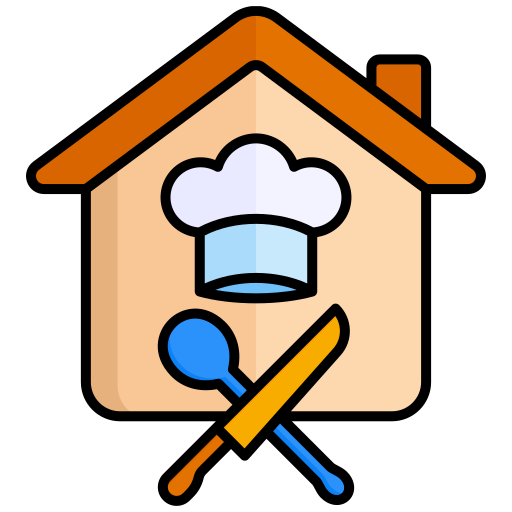Gluten-free and dairy-free recipes have become increasingly popular in recent years as more and more people are diagnosed with Celiac disease, lactose intolerance, or simply choose to adopt a healthier lifestyle. These recipes offer a delicious and nutritious alternative to traditional dishes, making it possible for everyone to enjoy their favorite foods without sacrificing taste or health. Whether you’re a seasoned pro at gluten-free and dairy-free cooking or just starting out, this guide will provide you with all the information you need to create delicious and satisfying meals.
In this article, we’ll explore the basics of gluten-free and dairy-free cooking, including a comprehensive list of ingredients, step-by-step instructions, and helpful tips. We’ll also answer some of the most frequently asked questions about gluten-free and dairy-free cooking, so you can feel confident in your ability to create delicious and healthy meals for yourself and your loved ones.
Ingredients
- Gluten-free flour: There are many different types of gluten-free flour available, such as almond flour, coconut flour, and brown rice flour. Each type of flour has its own unique flavor and texture, so experiment to find the ones you like best.
- Dairy-free milk: There are many different types of dairy-free milk available, such as almond milk, soy milk, and coconut milk. Each type of milk has its own unique flavor and nutritional profile, so choose the one that you like best.
- Dairy-free butter: Dairy-free butter is made from plant-based oils, such as coconut oil or palm oil. It has a similar flavor and texture to dairy butter, but it is free of lactose and casein.
- Eggs: Eggs are a good source of protein and can be used in a variety of gluten-free and dairy-free recipes.
- Fresh fruits and vegetables: Fruits and vegetables are naturally gluten-free and dairy-free, and they are a great way to add flavor, nutrition, and color to your meals.
Instructions
- When baking gluten-free, it is important to use a recipe that has been specifically developed for gluten-free baking. Gluten-free flour does not behave the same way as wheat flour, so using a recipe that has been tested and perfected for gluten-free baking is essential.
- Be careful not to overmix your gluten-free batter or dough. Overmixing can make the finished product tough and dense.
- When cooking dairy-free, it is important to find substitutes for dairy products that you enjoy. There are many different dairy-free products available, so experiment to find the ones that you like best.
- Don’t be afraid to experiment with different ingredients and recipes. There are many delicious gluten-free and dairy-free recipes available, so explore and find the ones that you love.
With a little practice, you’ll be able to create delicious and satisfying gluten-free and dairy-free meals that everyone will enjoy.
Tips
-
1. Read food labels carefully.
Many foods that are not labeled gluten-free or dairy-free may contain hidden gluten or dairy ingredients.
-
2. Ask questions when you eat out.
Many restaurants are not familiar with gluten-free and dairy-free diets, so it is important to ask questions about the ingredients in your food.
-
3. Carry snacks with you.
When you’re traveling or out and about, it is important to have gluten-free and dairy-free snacks on hand in case you can’t find a suitable meal.
-
4. Join a support group.
There are many support groups available for people with Celiac disease and lactose intolerance. These groups can provide you with information, support, and recipes.
-
5. Don’t give up.
Cooking gluten-free and dairy-free can be challenging at first, but it is possible to create delicious and satisfying meals. With a little practice, you’ll be able to master gluten-free and dairy-free cooking.
Frequently Asked Questions
What are some common symptoms of Celiac disease?
Common symptoms of Celiac disease include abdominal pain, bloating, gas, diarrhea, weight loss, and fatigue.
What are some common symptoms of lactose intolerance?
Common symptoms of lactose intolerance include abdominal pain, bloating, gas, and diarrhea.
Can I eat gluten-free and dairy-free if I don’t have Celiac disease or lactose intolerance?
Yes, you can eat gluten-free and dairy-free even if you don’t have Celiac disease or lactose intolerance. Many people choose to adopt a gluten-free and dairy-free diet for health reasons, such as to improve their digestion or reduce inflammation.
Are there any benefits to eating a gluten-free and dairy-free diet?
There are many potential benefits to eating a gluten-free and dairy-free diet, including improved digestion, reduced inflammation, and weight loss.
Gluten-free and dairy-free recipes offer a delicious and nutritious alternative to traditional dishes, making it possible for everyone to enjoy their favorite foods without sacrificing taste or health. Whether you’re a seasoned pro at gluten-free and dairy-free cooking or just starting out, we hope this guide has provided you with the information you need to create delicious and satisfying meals.
Youtube Video:

